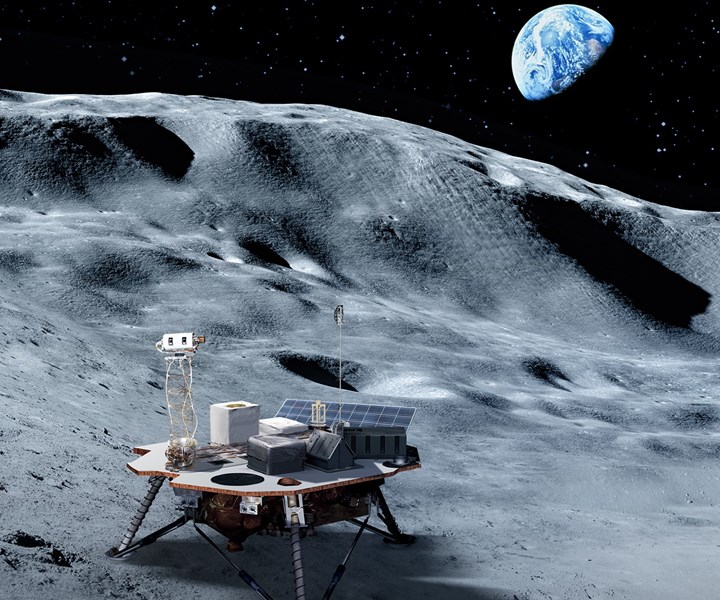NASA seeks companies to participate in next phase of commercial lunar payload services
NASA announcement calls for companies to participate in development of technologies to support the next generation of lunar landers.

Source | NASA
NASA (Washington, D.C., U.S.) has announced the latest opportunity for industry to participate in its Commercial Lunar Payload Services (CLPS) efforts to deliver science and technology payloads to and near the Moon.
The newest announcement calls for companies to participate in development of technologies to support the next generation of lunar landers that can land heavier payloads on the surface of the Moon, including the South Pole, as part of the agency’s Artemis program, which aims to return humans to the Moon by 2024.
NASA anticipates the need for both small and mid-size lunar landers to enable a variety of science investigations and larger technology demonstration payloads. Future payloads could include rovers, power sources, science experiments and technology to be infused into the Artemis program.
“As we enable broader opportunities for commercial providers through CLPS, we’re enlarging our capabilities to do novel measurements and technology development scientists have long wanted to do at the Moon,” says Thomas Zurbuchen, NASA’s associate administrator for the agency’s Science Mission Directorate.
Companies selected under this call will work to provide services to the lunar surface to support NASA exploration priorities and use the Moon as a proving ground for systems and technologies that will enable humans to explore Mars. Selected companies are able to compete for delivery task orders. CLPS providers already contracted for the project include:
- Astrobotic Technology (Pittsburg, Pa., U.S.)
- Deep Space Systems (Littleton, Colo., U.S.)
- Draper (Spiceland, Ind., U.S.)
- Firefly Aerospace (Cedar Park, Texas, U.S.)
- Intuitive Machines (Houston, Texas, U.S.)
- Lockheed Martin Space (Denver, Colo., U.S.)
- Masten Space Systems (Mojave, Calif., U.S.)
- Moon Express (Cape Canaveral, Fla., U.S.)
- Orbit Beyond (Edison, N.J., U.S.)
“The Artemis program integrates our science and human exploration goals, and we are using our commercial partners to help meet those goals with an innovative and cost-effective approach,” says Steven Clarke, NASA deputy associate administrator for exploration in science. “The capability to land heavier payloads on the lunar surface is a service that NASA has a keen interest in. We’re looking forward to innovative proposals and possibly more partners to advance what we’ve already started with CLPS.”
The CLPS contracts are indefinite-delivery, indefinite-quantity contracts with a combined maximum contract value of $2.6 billion with performance through 2028.
Related Content
-
Revolutionizing space composites: A new era of satellite materials
A new approach for high volumes of small satellite structures uses low-CTE, low-cost CFRP cellular core, robust single-ply skins and modular panel systems to cut lead time, labor and cost for reflectors, solar arrays and more.
-
Carbon fiber satellite arm reduces weight, simplifies assembly onto naval vessels
Satcom developer EM Solutions partnered with ACS Australia to replace an aluminum arm design with a 65% lighter, one-piece, corrosion-resistant carbon fiber/epoxy alternative.
-
Call for abstracts: CW Tech Days to explore high-temperature composite solutions
The fall 2025 installment of CW’s Tech Days online event series will cover high-temperature composite solutions for defense and space applications.






